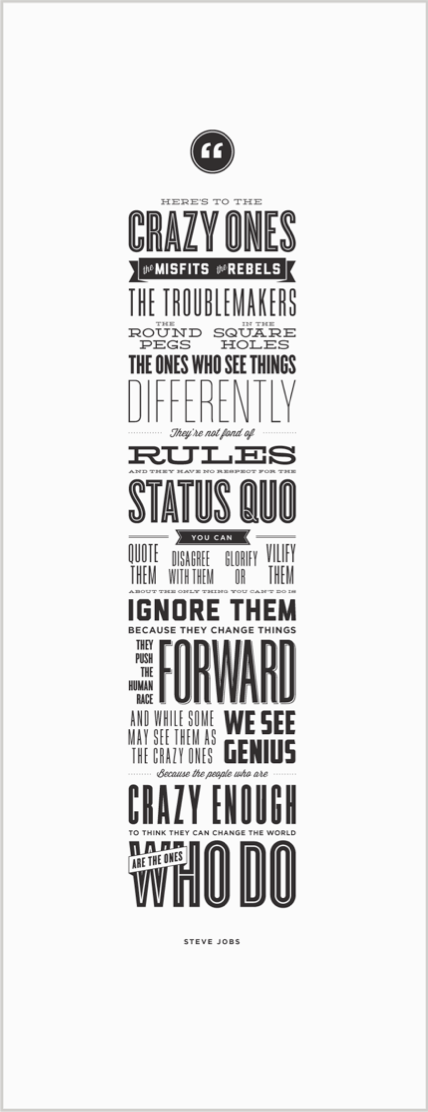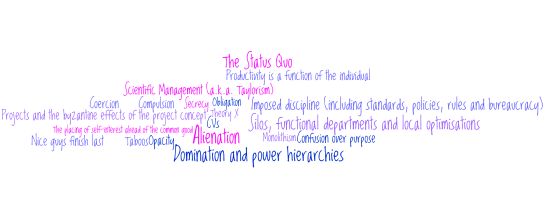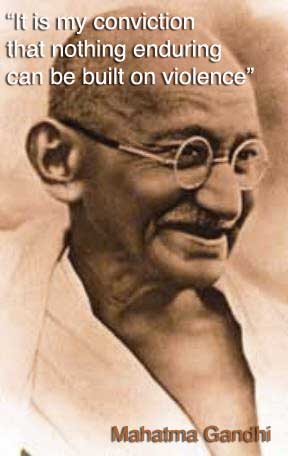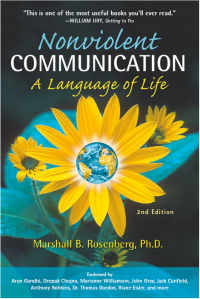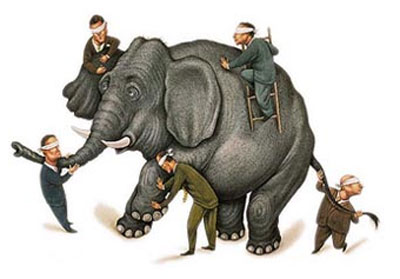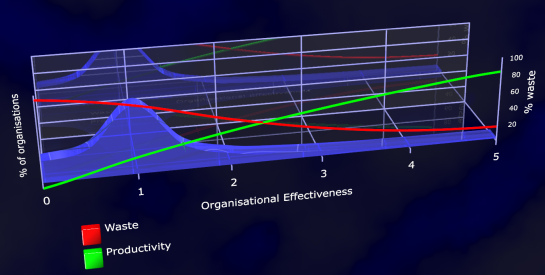How to Be a Great Software Development Manager

“I saw the angels in the organisation and carved until I set them free.”
~ Michelangelo (paraphrased)
First off, skip past the job title. If you think that you can be a great Software Development Manger by sticking to your neat little box on the org chart, honing and polishing the software development function until it gleams, you’re sadly mistaken.
Aside: It would be nice if organisations realised this and labelled such positions more descriptively and appropriately. We are some years away from this, I suspect. Maybe decades.
Simply “managing” the software development function brings local optimisation, dysfunction and madness. Oh yes, you may be thanked for it – you may even be tasked, via explicit or implicit targets and expectations, to do it. And if you succumb to that temptation – or pressure – you’ll not achieve anything like the results that are possible.
The very fact that an organisation labels your role as “Software Development Manager” is a strong signal that they remain mired in the Analytic mindset. But hey, they may want to change that – even without explicitly understanding the core issues, such as how the effectiveness of the entire organisation is a function of the prevailing organisational mindset. As a great Software Development Manager, it’s your job to bring that to folks’ attention, up and down the company. And to champion the necessary transition to a more effective organisational mindset.
The Brief
Sometimes it’s a mistake to try to be a great software development manager. Many executives ask for one without realising what that actually entails (disruption; fundamental change; end of the status quo; executives, too, having to change the way they think, work and see the world of work).
“Be careful what you wish for. There’s always a catch.”
~ Laurie Halse Anderson
Sometimes organisations really just want a good software development manager. Someone who will skulk quietly and proficiently in the hinterland of the IT department and not make waves. In these circumstances a great software development manager will rarely last long, or achieve much.
Results
What scale of results do you consider as signifying “great”? Given that the organisation is likely around the “one” mark on the Rightshifting index, then you could probably deliver ten, twenty, even thirty percent per annum uplift in productivity through hard work, determination and with (relatively) little disruption to the Status Quo. Sounds good? Maybe. Until you realise the potential exists for a hundred, two hundred, three hundred percent improvement – across the whole organisation.
“The greater danger for most of us lies not in setting our aim too high and falling short; but in setting our aim too low, and achieving our mark.”
~ Michelangelo
Deferred Results
You may be tempted to spend time fixing a “broken” software development organisation. On working on tools, methods, processes and technology issues. Don’t. Every day you spend on that is a day lost in accomplishing the real work of transition. No one inside the development function will have much thanks for you poking your nose into things they’re quite capable of fixing themselves. And no one outside the development function will have much interest, excepting those few things that impact them and their departments. And the solutions to those issues generally lie outside the development function itself, not inside.
“If not now, then when?”
~ Hillel the Elder
It’s all too easy to hunker down, look busy, do what folks are expecting you to do, and miss the bigger picture. So easy, in fact, that many software development managers never get out of this busywork and on the the real work of greatness.
The Heroic Manager
Maybe you think of yourself as some kind of saviour, riding in on a white horse and saving the organisation from its follies. But a great software development manager knows he or she is only a catalyst for change. A dead nematode in the heart of the oyster. He or she knows that the real work comes from everyone in the organisation, and the accolades are due to everyone, likewise.
So, act to create the situation where folks can actually give of their best. And even then, in organisations hobbled by years of ineffectual or under-achieving change initiatives, getting folks to step up and engage can be a challenge. Coercion, however sugar-coated, is not helpful here.
Find out what folks want and need – for themselves, for their colleague – for the wider organisation. Go look at what their jobs entail. And not just within Software Development. You may have a nice office – even a corner office – but every hour you spend in it is a hour lost on the road to greatness.
“Don’t just do something, stand there.”
~ The Buddha
Find out what’s been going well so far. Build on achievements, and folks’ individual and collective needs. Work together to find a common cause, a common purpose, that everyone can buy into – at an emotional, as opposed to rational, level.
As well as getting out of the office – get out of the building. Go see customers, suppliers, competitors and communities – work-related and social, both.
In the same way as understanding where and how the software development function fits in the wider organisation, get to understand where the organisation fits in its wider commercial ecosystem, and in society as a whole.
Over-Communicate
Talk with anyone and everyone – up and down the business, inside and out – about their view of the world of work. Listen to folks who have anything to say about the subject. Empathise with their point of view – even if it seems unhelpful or outmoded. What they say will help you understand their needs. If their needs are not being met, then don’t be surprised by a lack of cooperation.
Engage in meaningful dialogue – share your own perspective on the nature of organisations, on the world of work, and listen to others’. And exchange ideas on how work should work.
Don’t waste time on discussing how software development should work. That can come later – if it’s ever necessary. Instead, build a consensus on the role of the software development function in the wider context of the whole organisation. This will not make you many friends or allies. But it is essential.
“If not you, then who?”
~ Hillel the Elder
You will be misunderstood. At times, these misunderstanding will be so great as to threaten your credibility – and your job.
Alienation
In most organisations, great people in any discipline are seen as strange – alien, even. Most folks won’t understand what you’re saying, and even less what you’re thinking. How could it be otherwise, when the future that beckons is so unlike their present?
“The future is a foreign country; they do things differently there.”
Alienation does not make for good working relationships, however. Invest time and effort in reducing the distance between yourself and other folks. Not by changing your vision or by watering-down the things you say, but by being human – something we all have in common. Something that unites us.
“People will forget what you said, people will forget what you did, but people will never forget how you made them feel.”
~ Maya Angelou
Make Friends
You will need friends. Not allies – we’re trying to build bridges, not erect walls and create divisions. You will need friends for those dark days when your courage seems ready to fail you. When the obstacles seem insurmountable. When the vultures are circling overhead.
Courage
There’s no getting away from it. Taking on the task of changing a whole organisational mindset is a challenge. Even when most or all of the folks in the organisation are willing and able to help it’s still a challenge – and that’s the ideal scenario.
You might be lucky – being in an organisation at a confluence of circumstances where, for instance, the alternatives are so unpalatable as to make a transition clearly the best choice.
Or you may be really unlucky, and have circumstances, mindset and incumbents (a.k.a. vested interests) all pitted against you.
So although courage is likely essential, sometimes it’s not going to be enough. Sometimes, nothing is going to be enough.
“Misfortune nobly born is good fortune.”
~ Marcus Aurelius
Work Yourself Out
In highly effective organisations, the very job of “manager” fades away. If you do a truly great job for the organisation, you can expect your job to fade away too. In fact, that’s the best way of determining whether you really have had a great and lasting impact on the organisation. Work yourself out of a job. And into another, more satisfying role in the reborn organisation. Because once the organisation is working in ways that meet your needs, why would you ever want to leave?
– Bob
Further Reading
If not you, then who? – Blog post
Solving Tough Problems: An Open Way of Talking, Listening, and Creating New Realities ~ Adam Kahane
Dialogue and the Art of Thinking Together ~ William Isaacs
First Break All the Rules ~ Marcus Buckingham and Curt Coffman
The Presence Workbook ~ Jaworski, Kahane and Scharmer
The Germ Theory of Management ~ Myron Tribus (pdf)
Afterword
